Core Points
Qubetics (TICS) is not a traditional Layer-1 public chain; its goal is to connect mainstream chains like Ethereum, Bitcoin, and Solana, creating a truly seamless multi-chain ecosystem.
The TICS token is the driving engine of the entire ecosystem, not only covering transaction fees but also supporting decentralized VPN services, and even enabling gas-free transfers within the Qubetics wallet.
After its launch, the price of the TICS token quickly surged, attracting the attention of many early investors. Currently, you can buy and sell through the TICS/USDT trading pair on several mainstream centralized exchanges.
Qubetics is a complete platform project, featuring a multi-chain wallet, a market for tokenizing physical assets, and a set of smart contract development tools (IDE) suitable for developers with no prior experience.
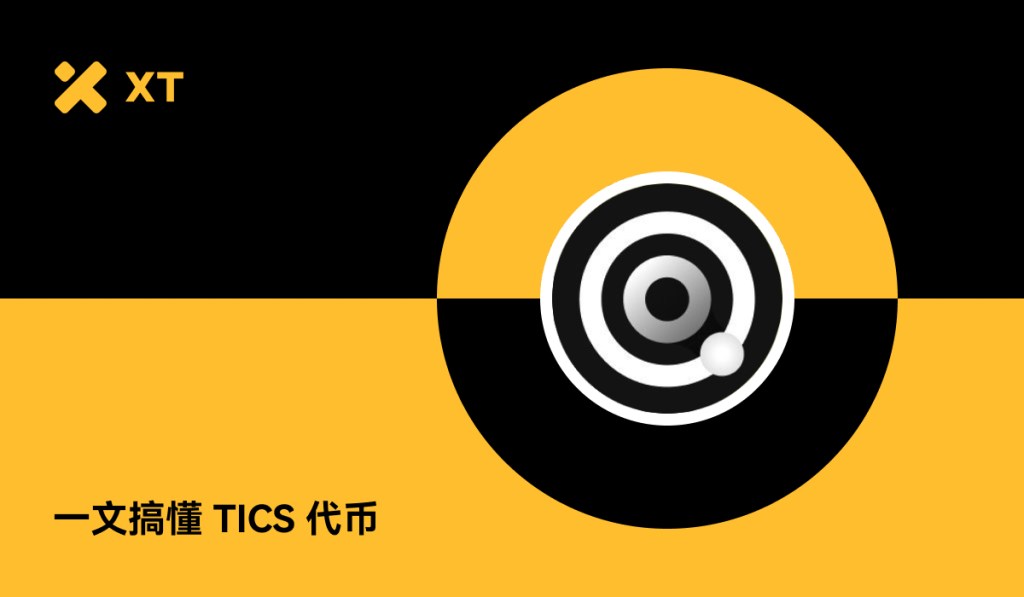
Blockchain technology is evolving rapidly, and Qubetics (TICS) is one of the most noteworthy new projects recently. Unlike traditional Layer-1 public chains, Qubetics envisions connecting all mainstream blockchains to create a unified multi-chain network. It features a capped token model, decentralized VPN, multi-chain wallet, and other practical functions, balancing practicality and innovation. Whether you are a developer, investor, or just want to know today's TICS price or TICS/USDT trading situation, this article will provide you with a comprehensive analysis.
Table of Contents
Overview of the Qubetics (TICS) Project
TICS Token Economics, Distribution Mechanism, and Destruction Rules
Core Applications and Ecosystem of Qubetics
How to Participate and Obtain TICS Tokens
Analysis of Qubetics' Competitive Landscape
Potential Risks and Considerations for Investing in TICS
Future Outlook for Qubetics (TICS)
Frequently Asked Questions about Qubetics (TICS)
Overview of the Qubetics (TICS) Project
Qubetics is a next-generation Layer-1 public chain aimed at breaking the current fragmentation in the Web3 world by integrating mainstream blockchains like Ethereum, Solana, Cosmos, and even Bitcoin into a single interoperable network. It is not about "each fighting their own battles" like traditional chains, but rather creating a true multi-chain hub that makes cross-chain interactions simpler, faster, and safer, without relying on risky third-party bridges.
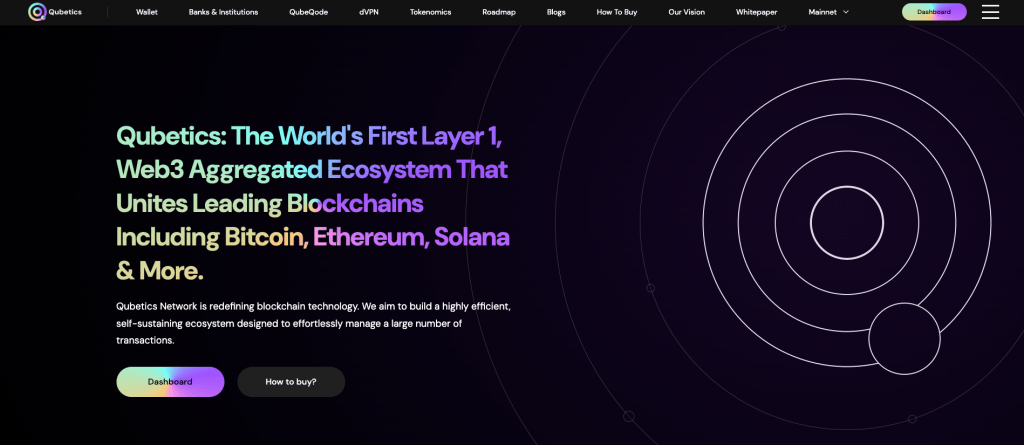
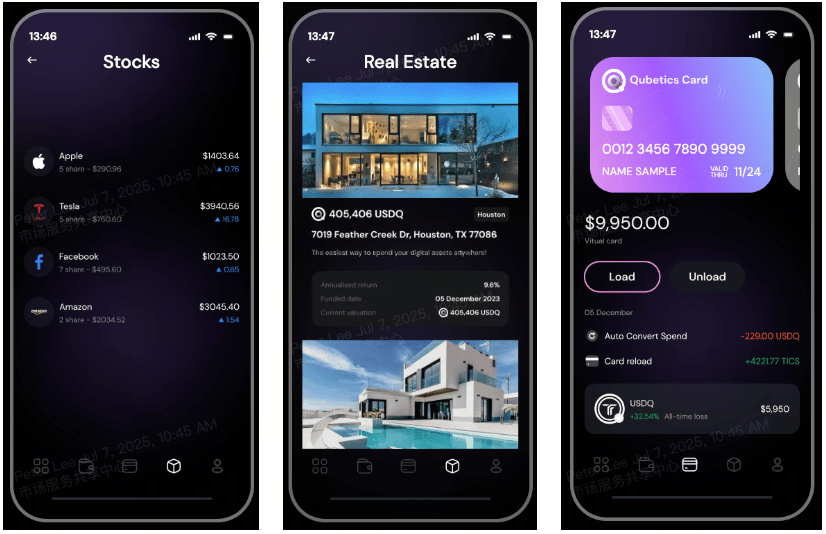
Image Credit: Qubetics Homepage
What Makes Qubetics Unique?
Qubetics is not just another "copycat Ethereum"; it is designed from the ground up with a focus on three core directions:
Native Interoperability: A system that supports different architectures like EVM (Ethereum), WASM, and UTXO (Bitcoin) within one network.
Built-in Privacy Tools: Integrated decentralized VPN (dVPN) to protect user privacy.
Real-world Use Cases: Supports asset tokenization, crypto payments, and other practical functions.
Core Application Scenarios
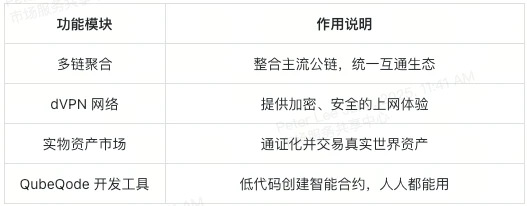
Role of the TICS Token
TICS is the core fuel of Qubetics, and almost all operations rely on it:
Used to pay on-chain transaction fees.
Used for staking and participating in governance.
Unlocks and utilizes services within the ecosystem, such as dVPN.
Nodes and validators can earn TICS rewards by participating in the network.
TICS Token Economic Model, Distribution, and Destruction Mechanism
TICS is the core driving force of the entire Qubetics ecosystem. Whether it is transaction fees, staking rewards, or the use of privacy tools, everything relies on TICS to operate. What sets it apart is its capped total supply and clear deflationary design, ensuring long-term value.
Total Supply and Destruction Mechanism
After the public pre-sale ends, all unsold TICS tokens will be permanently destroyed. This keeps the total supply controlled at around 1.36 billion tokens, effectively reducing inflation risk and enhancing scarcity. Currently, there are no plans for new issuance; future rewards will come entirely from the allocated portion, making TICS a naturally deflationary asset.
Overview of TICS Distribution
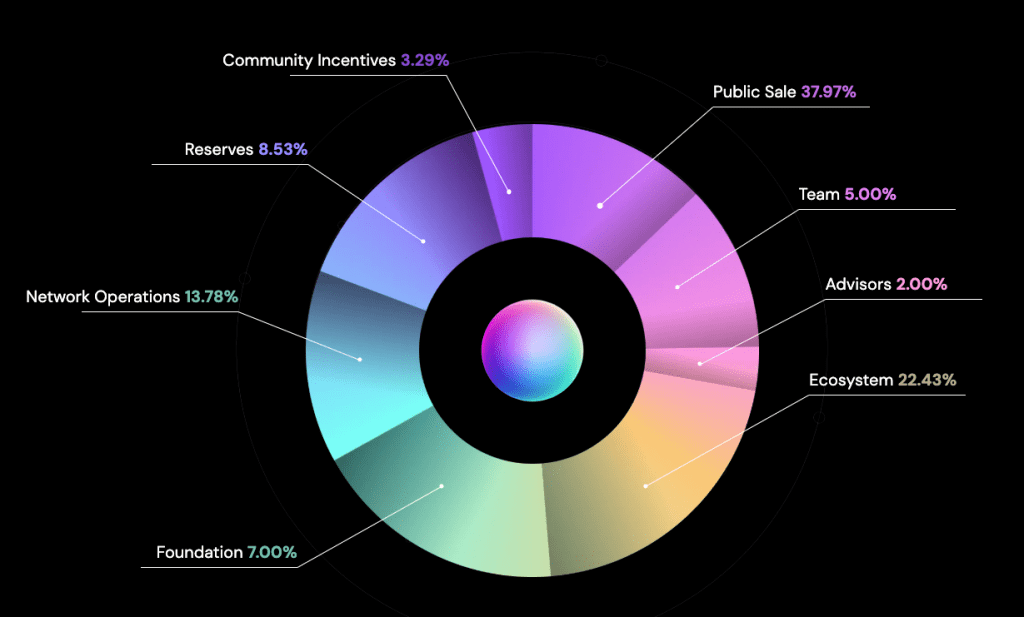
Image Credit: Qubetics Homepage
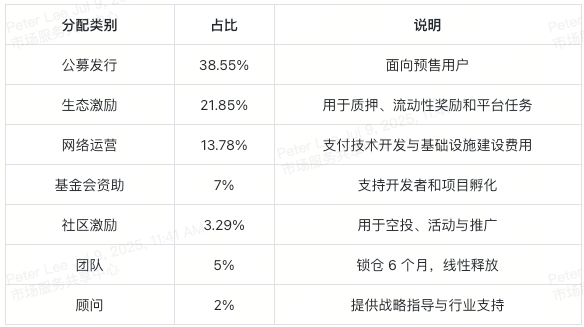
Why is this important?
With no new token issuance and the team's and advisors' lock-up arrangements, the TICS token model lays the foundation for the project's long-term sustainable development. Whether you are participating in staking or monitoring the TICS/USDT trading trends, this design helps stabilize market confidence and token value.
Overview of Qubetics Core Applications and Ecosystem dApps
Qubetics is far more than just a public chain project; it is building a complete Web3 application ecosystem that can be practically used. The TICS token is the key driving force behind all of this, from private internet access to cross-chain payments, all revolving around TICS.
Decentralized VPN (dVPN)
Qubetics' built-in dVPN is a privacy-focused decentralized virtual private network that allows users to access the internet securely and without censorship. It operates through a peer-to-peer node network:
Users pay TICS to receive anonymous encrypted browsing services.
Anyone can set up a node to earn TICS.
No logs, no central servers, ensuring user privacy.
Multi-Chain Wallet
The official Qubetics wallet supports multiple blockchain assets, not just for storing coins but also for real payment and exchange functions:
Transfers within the TICS network are fee-free.
Supports real-name payments via Apple Pay and Google Pay.
Directly exchange, view cross-chain assets, and support NFT storage within the wallet.
QubeQode Smart Contract Development Platform
QubeQode is a low-code IDE provided by Qubetics, making it easy for anyone to develop Web3 applications:
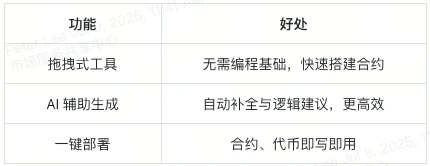
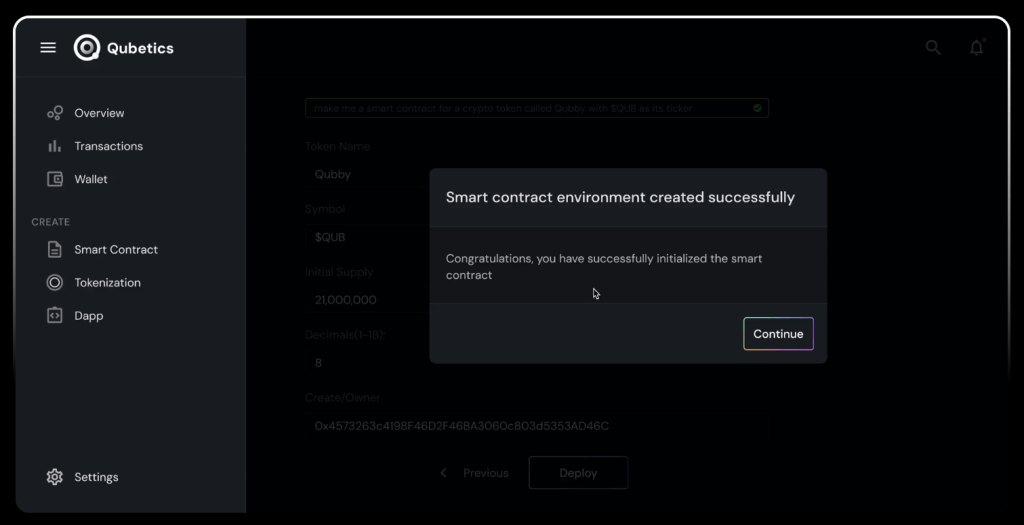
Image Credit: Qubetics Homepage
Asset Tokenization Market
This built-in trading platform supports the on-chain and circulation of real assets, such as real estate, artworks, and precious metals:
Supports asset tokenization on-chain.
Allows small-scale subscriptions for shared asset ownership.
Buy and sell using TICS, with instant settlement.
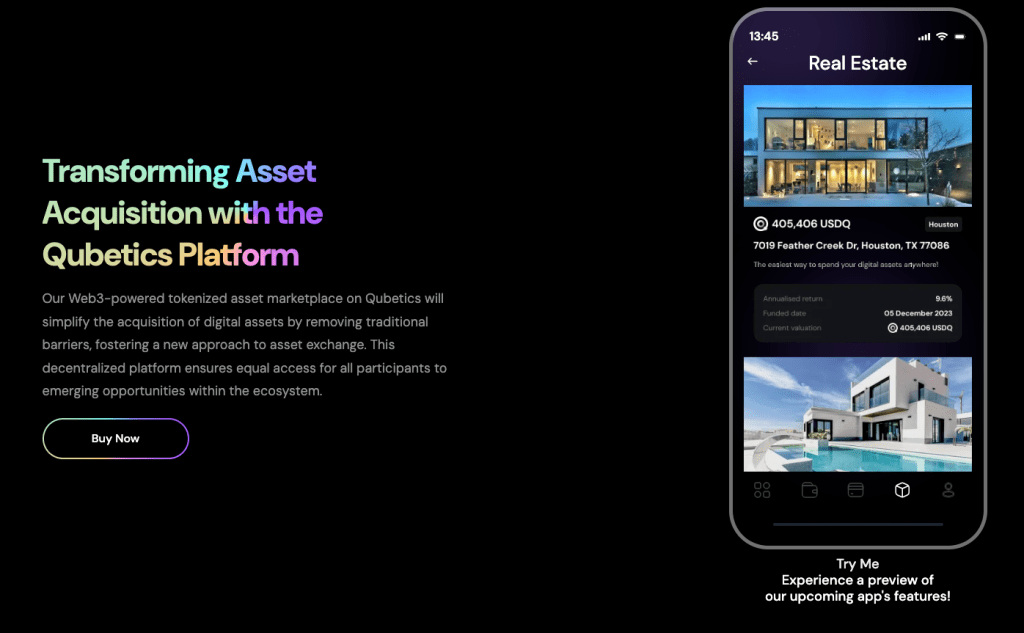
Image Credit: Qubetics Homepage
Blockchain Explorer and Toolset
TICSScan is Qubetics' official on-chain tool platform, allowing users to check on-chain data at any time:
View transaction history and address asset changes.
Track validator performance and rewards.
Monitor real-time activities such as cross-chain interactions and contract calls.
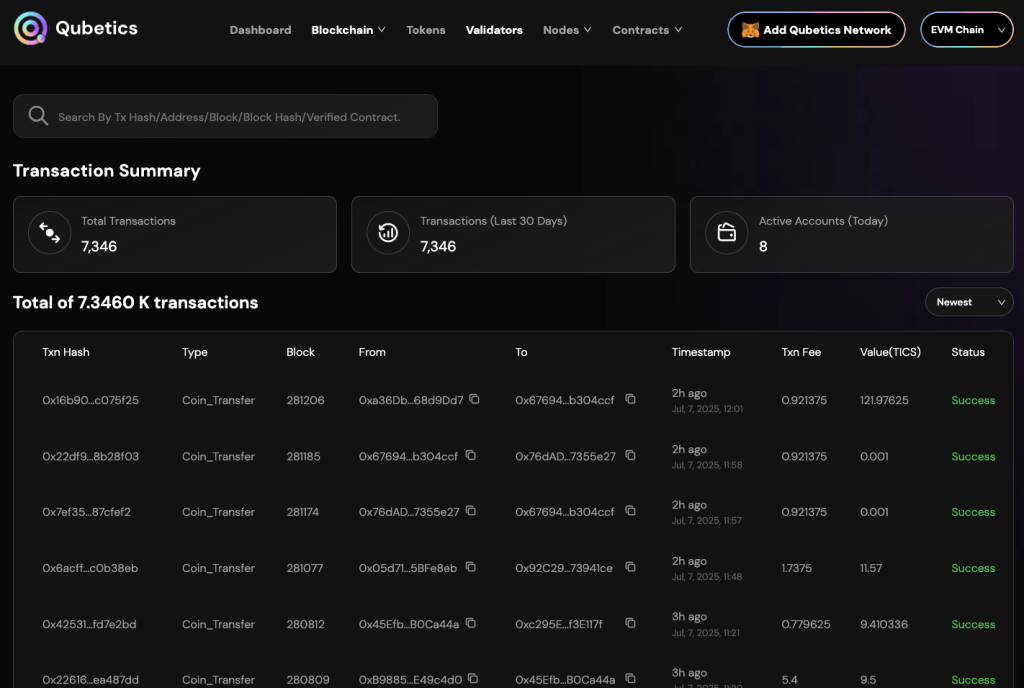
Image Credit: Qubetics TicsScan
How to Participate and Obtain TICS Tokens?
Want to join the Qubetics ecosystem? There are many simple and practical ways to obtain TICS:
Buy TICS on exchanges: Currently, the TICS/USDT trading pair is available on the MEXC and LBank platforms, and spot trading on XT.COM will soon be open, providing you with more convenient options.
Stake TICS to earn rewards: Holding 5,000 TICS allows you to delegate to validator nodes to participate in network consensus; holding 25,000 TICS enables you to become a validator yourself, participate in block production, and earn rewards.
Run a dVPN node to earn TICS: Use Qubetics' decentralized VPN (dVPN) to share your network bandwidth, and you can easily earn TICS without needing specialized mining equipment.
Join the community and participate in tasks to earn airdrops: The official team regularly launches airdrop events, testnet tasks, and promotional activities. By actively participating, you have the chance to receive TICS for free without any financial investment.
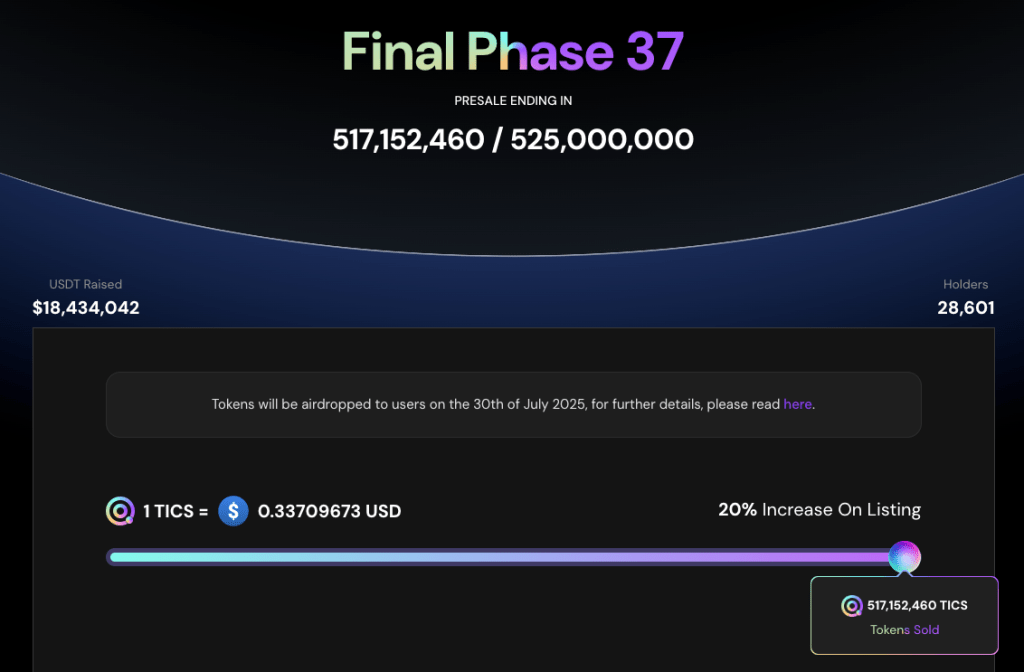
Image Credit: Qubetics Investor Dashboard
Qubetics' Competitive Advantages in the Ecosystem
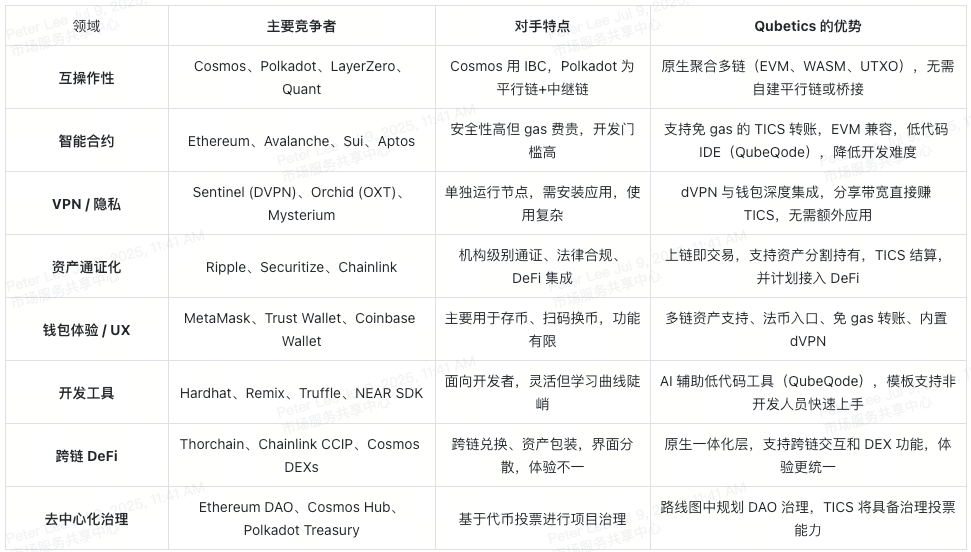
Inter-Chain Interoperability
Cosmos and Polkadot are pioneers in the multi-chain ecosystem. Cosmos connects different independent chains through the IBC protocol, while Polkadot relies on a parachain architecture coordinated by a relay chain. Both solutions require developers to build within their own frameworks.
Qubetics takes a completely different approach:
It uses "chain abstraction" technology to directly connect to mainstream blockchains like Ethereum, Bitcoin, and Solana;
No need to build custom parachains or rely on third-party bridges;
Developers can build cross-chain applications with minimal configuration;
Supports both EVM and non-EVM blockchains, all on a single Layer-1.
This "plug-and-play" aggregation method significantly lowers the barriers to cross-chain development, making multi-chain innovation faster and safer.
Smart Contracts
Ethereum remains the mainstream smart contract platform, but high fees and network congestion deter many users. Avalanche, Sui, and Aptos are faster but still require gas fees and can be complex to develop on.
Qubetics simplifies development:
Fully compatible with EVM, supporting Solidity and common development tools;
Built-in TICS gas-free transfer mechanism for a smoother user experience;
Provides QubeQode, a low-code IDE with built-in AI-assisted development;
Whether you are an experienced programmer or a beginner, you can easily get started with Web3 development.
It lowers the barriers and reduces friction in usage.
Decentralized VPN (dVPN)
Sentinel (DVPN) and Orchid (OXT) are among the earliest decentralized VPN projects, providing users with secure browsing experiences while incentivizing node operators. However, their usage processes are often complex: requiring dedicated wallets, downloading standalone applications, and switching between different tokens.
Qubetics integrates privacy features directly into the wallet:
dVPN is a native feature of the wallet, requiring no additional downloads;
Users can pay with TICS for anonymous browsing;
Anyone can run a node and earn TICS by sharing bandwidth;
No cumbersome dependencies or complex configurations are needed.
This is true "Web3 privacy," simple and practical.
Asset Tokenization
Tokenizing real-world assets (RWA) is becoming a hot trend in the crypto space. Ripple is advancing cross-border payments between institutions; Securitize focuses on compliant asset tokenization; and Chainlink provides on-chain data support and proof of reserves.
Qubetics takes a more grounded approach:
Users can tokenize real estate, artworks, goods, etc.;
The platform supports fractional ownership and on-chain buying and selling;
TICS is used as the primary token for listing, payment, and settlement;
Future integration of DeFi functions will enable scenarios like collateralized lending.
No longer exclusive to institutions, ordinary users can also participate in the asset tokenization revolution.
Risks and Considerations of the TICS Token
The Qubetics project has significant potential, but as an early-stage project, there are several risks worth noting. Here are some points to consider:
Execution Risk: Qubetics aims to build a complete ecosystem with many modules involved. If development progress is delayed or features are not delivered adequately, it may affect community trust.
Market Volatility: Like most newly launched cryptocurrencies, TICS's price may experience significant fluctuations in the first year, and investors should be mentally prepared.
Security and Regulatory Issues: Features like cross-chain bridges and decentralized VPNs must prioritize security. Additionally, many countries are still changing their regulatory rules regarding VPNs and asset tokenization, which may lead to future policy impacts.
Hype vs. Actual Implementation: The project is currently heavily promoted and highly visible, which also means that expectations are high. If technology and user growth do not keep pace, it may lead to a situation where there is "a lot of noise but little action."
Future Outlook for Qubetics (TICS)
Qubetics has had a very smooth start: the pre-sale has been completed, it has launched on multiple mainstream exchanges, and the multi-chain mainnet is already operational, laying a solid foundation in the early stages. The current market price of TICS also reflects the confidence and long-term expectations of many early investors.
The most critical factor moving forward is "execution." If the team can deliver on Bitcoin interoperability, DAO governance mechanisms, and global dVPN deployment as scheduled, Qubetics is likely to emerge as a new generation Layer-1 public chain in this cycle.
Particularly, its unique positioning in user experience, privacy protection, and multi-chain compatibility makes it stand out among numerous projects.
For those monitoring the TICS/USDT trading pair or looking for the next potential dark horse, Qubetics is worth keeping an eye on. Although it still has many areas to prove itself, the current foundation is solid, and if the team can continue to deliver, the future looks promising.
Frequently Asked Questions about Qubetics (TICS)
Q1: What is Qubetics?
Qubetics is a next-generation Layer-1 blockchain project aimed at connecting mainstream public chains like Ethereum, Solana, and Bitcoin into a truly interoperable network. It supports multi-chain DeFi applications, has built-in privacy tools (such as decentralized VPN), and enables the on-chain tokenization of real assets.
Q2: What are the uses of the TICS token?
TICS is the core fuel of the Qubetics ecosystem, used for paying on-chain transaction fees, participating in staking and governance, using decentralized VPN, and various DeFi applications. It will also play an important role in community governance in the future.
Q3: Where can I check the real-time price of TICS?
You can currently check the real-time market for TICS/USDT on exchanges like MEXC and LBank, or on market platforms like CoinMarketCap and CoinGecko.
Q4: Is Qubetics similar to Cosmos or Polkadot?
To some extent, it is indeed similar, as they all emphasize interoperability between chains. However, Qubetics uses a method called "native aggregation," directly connecting multiple chains without the need to develop custom parachains or use intermediary bridges.
Q5: How can I stay updated on Qubetics' latest developments?
You can follow Qubetics' official X (formerly Twitter) account, join their Telegram group, or visit their official website for the latest news and updates.
免责声明:本文章仅代表作者个人观点,不代表本平台的立场和观点。本文章仅供信息分享,不构成对任何人的任何投资建议。用户与作者之间的任何争议,与本平台无关。如网页中刊载的文章或图片涉及侵权,请提供相关的权利证明和身份证明发送邮件到support@aicoin.com,本平台相关工作人员将会进行核查。




